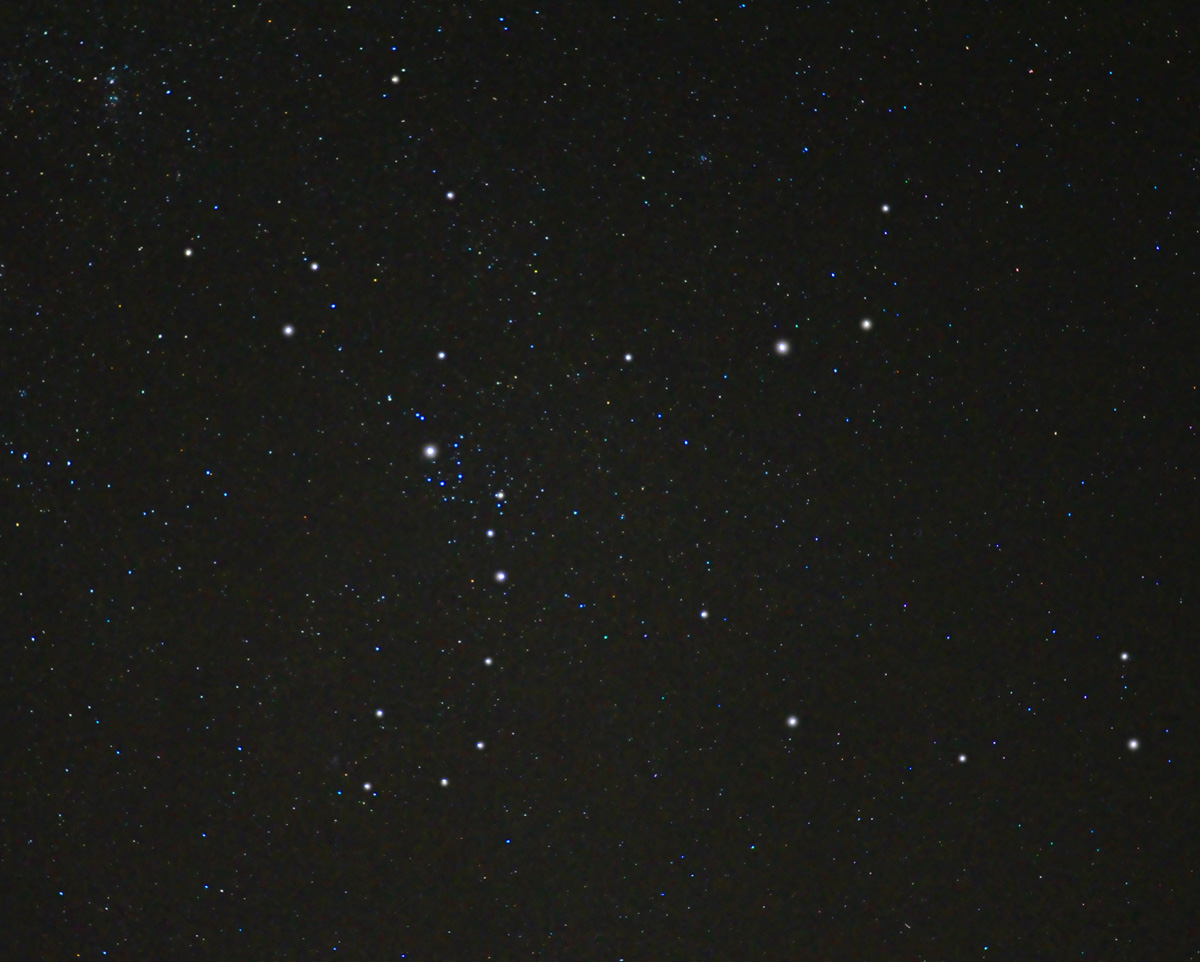Perseus
Perseus is a northern constellation that lies mostly in the Milky Way, close to Cassiopeia, his mother-in-law-to-be and Andromeda, his future bride-to-be. Perseus is host to a famous eclipsing binary star, Algol, which forms his right hip, and the famous Double Cluster, an open star cluster which looks very nice in binoculars or a small telescope. Perseus is also the location in the sky where the annual Perseid meteor shower radiates every August. 2nd magnitude Algol is a favorite of star gazers, since it dims to 3rd magnitude for about 5 hours every 2 1/2 days. The Algol system consists of a bright type B primary, about twice the size of our sun, a much dimmer dwarf star that orbits at a distance of only 5 1/2 million miles, and a third companion star about 250 million miles away from the eclipsing pair, which requires almost 2 years to revolve around them. It is believed that the dwarf star is actually an older red giant that has lost much of its outer parts to the gravitational pull of its main sequence companion. Also, it is interesting to note that the motion of Algol across the Milky Way brought it within 10 light years of Earth about 7 million years ago, at which time it would have been more than twice as bright as Sirius. It is even possible that its gravity at that time might have been strong enough to disturb the Oort Cloud and send large numbers of comets spinning off in all directions, some of which surely would have found their way into the inner solar system. Mirphak (also spelled Mirfak) is an F5 supergiant star, being 42 times as big as our sun, 5000 times as bright as Sol, and lying about 590 light years distant. Atik is a spectroscopic binary consisting of a type B1 giant and a type B3 dwarf orbiting each other every 4.5 days. The Double Cluster is a pair of young, bright, open star clusters about 7,000 light years distant, containing approximately 300 giant blue stars each. And although the two clusters are near each other in space, one is about 2 million years older than the other. M34 is an open star cluster of about 100 stars lying at a distance of about 1400 light years; it can be glimpsed with the naked eye under a dark sky and spans more than the diameter of the full moon. M34 is much older than the Double Cluster, being nearly 200 million years of age.
The best time to view Perseus is November through March.
 |